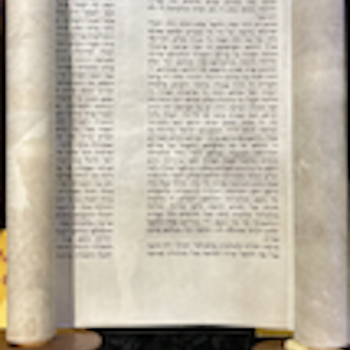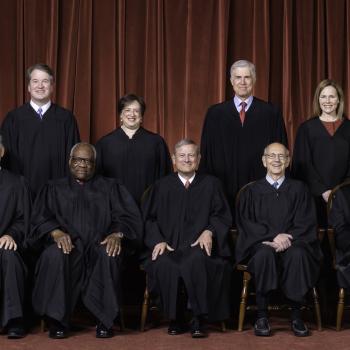One of the most important texts in biblical eschatology is Jesus’ so-called Olivet Discourse that he delivered to his apostles during Passion Week. It is recorded by all three synoptists (Matthew, Mark, and Luke) with some slight differences in accounts. This teaching about the future includes Jesus’ return at the end of the age, which the church has often called “the second coming of Christ.”
The most difficult interpretative problem in Jesus’ Olivet Discourse concerns his remark about a fig tree and the word “generation.” He said, “From the fig tree learn its lesson: as soon as its branch becomes tender and puts forth its leaves, you know that summer is near. So also, when you see all these things, you know that he is near, at the very gates. Truly I tell you, this generation will not pass away until all these things have taken place” (Mt 24.32-34; cf. Mk 13.28-30; Lk 21.29-32).
What did Jesus mean by the word “generation” (Gr. gena)? Some commentators think he meant the word racially, thus referring to the Jewish people. But most interpreters insist he meant a literal generation of people, it specifically being his own generation.[1] A generation is designated in the Bible, after the era of the patriarchs, as forty years in length. Assuming Jesus said this in A.D. 30, that generation would end in A.D. 70, the year the Romans destroyed the temple at Jerusalem.
So, most distinguished New Testament scholars believe Jesus claimed he would return within a generation, that is, no later than A.D. 70. For example, James D. G. Dunn says of the words “this generation” (Gr. he genea haute) in Jesus’ Olivet Discourse, “as Kummel justifiably argues, ‘it is beyond dispute he genea haute [this generation] can only mean the contemporaries of Jesus.’ The implication is again clear that Jesus expected a final catastrophe within the lifetime of his own generation.”[2] Some of these scholars make the obvious conclusion that Jesus therefore was wrong, whereas others are not willing to state that outright.
I strongly disagree with this somewhat scholarly consensus concerning the word “generation” in Jesus’ Olivet Discourse. I don’t think this conundrum can be settled apart from the expression “all these things” (Gr. panta tauta) that follows it. And there is no difference between “these things” (Gr. tauta) and “all these things” since Mark has both in the disciples’ original question (Mk 13.4), showing they are interchangeable. Jesus said the generation that lives to see “all these things” (Gr. tauta panta)–the things he just predicted will precede his parousia–will be like the leaves on a fig tree.[3] Just as leaves sprouting on a fig tree signal that summer is near, seeing “all these things” signals the end is near. So, what are “all these things”?
Many scholars claim that “(all) these things,” mentioned twice in Mt 24.33-34/Mk 21.29-30, refer to everything Jesus has predicted so far in his Olivet Discourse, thus including the cosmic disturbances as well as his parousia (“presence”=his return) itself. I think this is incorrect since Matthew and Mark record that Jesus said, “when you see (all) these things (taking place), you know that he is near, at the very gates” (Mt 24.33/Mk 13.29). The word “he” refers to Jesus himself at his parousia, and the cosmic disturbances will accompany his parousia, serving as immediate heralds of it. When Jesus’ parousia occurs, he is no longer near, that is, at the very gates, but here. In other words, he will have arrived. So, “all these things” must be restricted to what will happen prior to the parousia and its accompanying cosmic disturbances.
What did Jesus say to his disciples in his Olivet Discourse that would occur prior to his parousia? He said the temple at Jerusalem would be destroyed (Matt 24.1-2), which indeed happened forty years later. He said there would be “wars and rumors or wars,” “famines and earthquakes” (vv. 6-7). He said his disciples would suffer martyrdom, many false prophets would arise, and his gospel of the kingdom would be proclaimed throughout the world (vv. 9-14). Then he said the abomination of desolation, mentioned in the book of Daniel, would be set up in the temple at Jerusalem and that this would unleash a “great tribulation” against his disciples (vv. 15-21).
That abomination of desolation is probably an idol. It certainly did not happen during the subsequent forty years until the temple was destroyed in A.D. 70. Since Jerusalem has never had a temple since then, this prophecy has remained unfulfilled to this day. Therefore, Jesus could not have meant that he would return during that forty year generation because the abomination of desolation did not occur during that time. Rather, Jesus meant the generation that witnesses wars, famines, earthquakes, the spreading of the gospel worldwide, and the abomination of desolation being set up in the temple at Jerusalem will also witness his parousia, that is, his second coming. How so? Daniel is very clear that when the abomination of desolation occurs, about three-and-a-half years of tribulation will be imposed on the people of God and then the end will occur (Daniel 7.21, 25; 9.27; 11.31; 12.7; cf. 8.14; Revelation 12.6, 14, 17; 13.7).
Furthermore, the word “generation” in Mt 24.34 and Mark 13.30 cannot necessarily refer to the generation of Jesus’ time because of John 21. Scholars surely are right in deeming it a later addition to the Fourth Gospel. The sum of it is that the risen Jesus appeared to seven of his disciples while they were fishing on Lake Galilee. Jesus then predicted that Peter would suffer a martyr’s death (Jn 21.18-19). Then we read, “Peter turned and saw the disciple whom Jesus loved following them; . . . he said to Jesus, ‘Lord, what about him?’ Jesus said to him, ‘If it is my will that he remain until I come, what is that to you? Follow me!’ So the rumor spread in the community that this disciple would not die. Yet Jesus did not say to him that he would not die, but, ‘If it is my will that he remain until I come, what is that to you?’” (vv. 20-23).
The Gospel of John has multiple references about someone scholars call “the beloved disciple” (Jn 13.23; 19.26; 21.7, 20; cf. 18.15), who is mentioned here in Jn 21.20. There has been much discussion about his identity. Church fathers identified him as the Apostle John, and I think they are likely right. There is strong patristic evidence that the Apostle John lived a long life, at least into the 90s. That is decades after the forty-year generation beginning in A.D. 30, when Jesus likely died, had been completed. Yet the author of John 21 makes corrects this rumor by saying Jesus did not say this beloved disciple, probably John, would not die and thus live to witness Jesus’ return.
So, it is obvious that if John 21 is an addendum, it was added to correct a false rumor that had circulated in at least the Johannine community that the beloved disciple would not die but live to witness Jesus’ return. So, this false rumor is exactly like the false teaching of scholars who say Jesus’ word “generation” in his Olivet Discourse means he said he would return within forty years of his death.
[1] E.g., W.G. Kummel, Promise and Fulfilment, 61.
[2] James D.G. Dunn, Jesus Remembered (Grand Rapids: Eerdmans, 2003), 434; W.G. Kummel, “Eschatological Expectation in the Proclamation of Jesus,” in The Future of Our Religious Past: Essays in Honour of Rudolf Bultmann, edited by James M. Robinson (London: SCM, 1971), 38.
[3] Luke adds that Jesus said, “and all the trees” (Lk 21.29). Matthew and Mark have not included it only because the fig tree loses its large leaves with the onset of winter, and most trees in Israel are deciduous. Although all trees put forth new leaves in springtime, the fig tree is most noticeable in doing so.
See these related posts:
“Why Jesus Can’t Return ‘Soon’ and Wasn’t Wrong about It”
“Do Evangelicals Know that C. S. Lewis Said Jesus ‘Was Wrong’ about His Return?“













